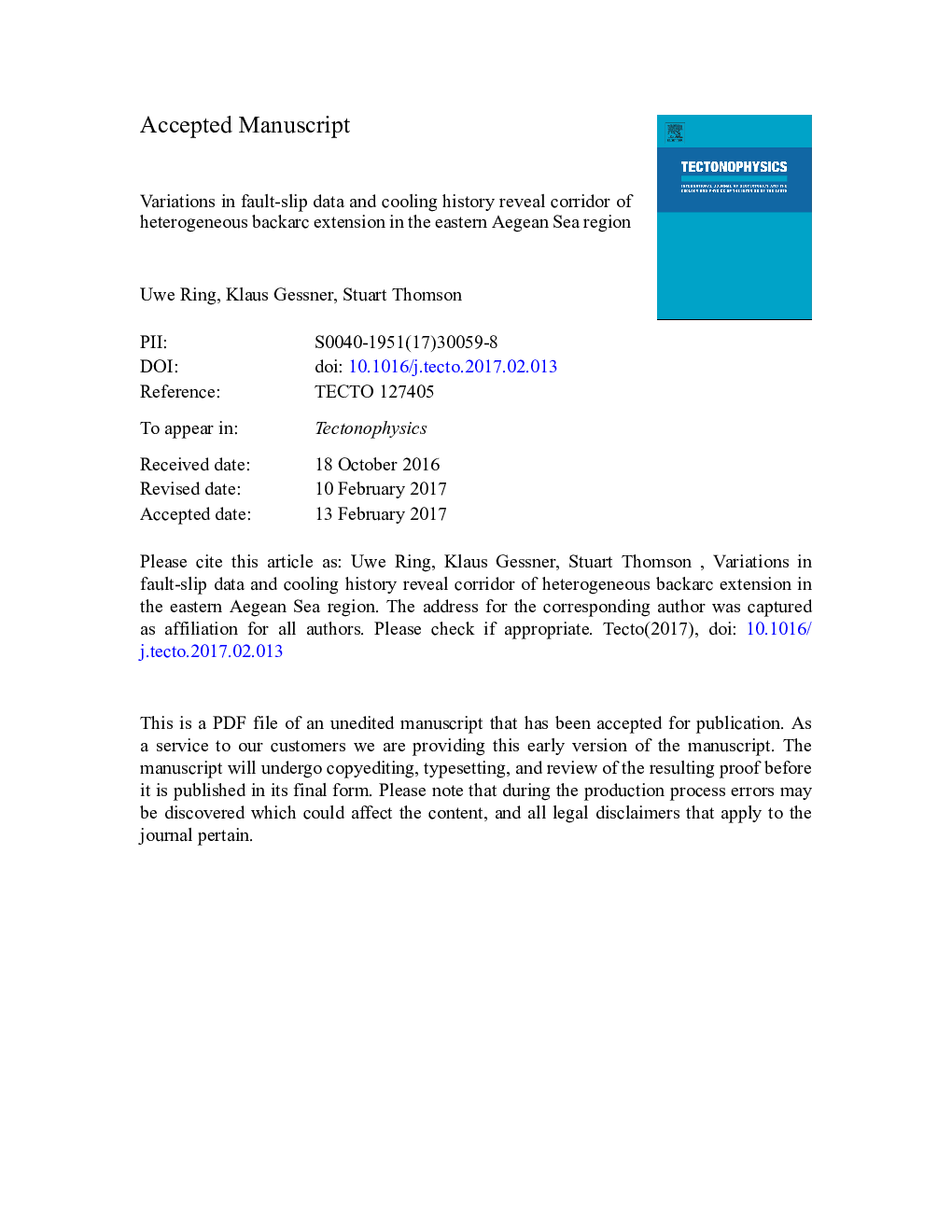| کد مقاله | کد نشریه | سال انتشار | مقاله انگلیسی | نسخه تمام متن |
|---|---|---|---|---|
| 5781857 | 1636702 | 2017 | 57 صفحه PDF | دانلود رایگان |
عنوان انگلیسی مقاله ISI
Variations in fault-slip data and cooling history reveal corridor of heterogeneous backarc extension in the eastern Aegean Sea region
ترجمه فارسی عنوان
تغییرات در داده های لغزش گسل و تاریخچه ی خنک سازی، راهکار گسترش پس زمینه ناهمگن در منطقه ی دریای اژه را نشان می دهد
دانلود مقاله + سفارش ترجمه
دانلود مقاله ISI انگلیسی
رایگان برای ایرانیان
کلمات کلیدی
اطلاعات لغزش گسل، تغییر شکل ناهمگن، سازه های مرزی پلیت، آناتولی، منطقه دریای اژه،
موضوعات مرتبط
مهندسی و علوم پایه
علوم زمین و سیارات
فرآیندهای سطح زمین
چکیده انگلیسی
We report fault-slip data across the boundary between the highly extended and largely submerged crust underlying the Aegean Sea from Samos in the north to eastern Crete in the south, and the much less extended and emergent crust of western Anatolia. We identify three brittle deformation increments, a late Miocene (mainly Pliocene) to Recent crustal stretching increment, an intermittent early to late Miocene shortening increment concurrent with extension and magmatism, and a Miocene extensional event. The youngest increment documents late Miocene to Recent NNE extension over large areas, but can locally also be oriented SE (Amorgos and Astipalea Islands), and ESE (eastern Crete) suggesting overall oblate strain geometry. The intermittent Miocene (~Â 24-5Â Ma) fault-slip records suggest overall prolate strain geometry, where NNE stretching is accompanied by E-W shortening. The older extension event is mainly NNE directed but on Samos Island extension is E-W, probably reflecting local extension in a sinistral wrench corridor in the early/mid Miocene. Overall it seems that since the early Miocene NNE-trending extension is the dominant regime in the eastern Aegean with an intermittent component of short-lived E-W shortening. The existence of a corridor of heterogeneous crustal deformation - which is spatially associated with uncharacteristically old fission track ages - and the apparent change in strain geometry in time challenge concepts that propose that the eastern Aegean Sea and western Anatolia have been deformed as a continuous tectonic domain since the Miocene. We propose that the regional variation in extensional strain geometry resulted from a sinistral wrench component that was superimposed on the regional 'background' NNE extension by translation across a diffuse plate boundary. We conclude that the eastern shoreline of the Aegean Sea is controlled by a Miocene to Recent sinistral wrench corridor that accommodated movement between different lithospheric domains.
ناشر
Database: Elsevier - ScienceDirect (ساینس دایرکت)
Journal: Tectonophysics - Volumes 700â701, 20 March 2017, Pages 108-130
Journal: Tectonophysics - Volumes 700â701, 20 March 2017, Pages 108-130
نویسندگان
Uwe Ring, Klaus Gessner, Stuart Thomson,
